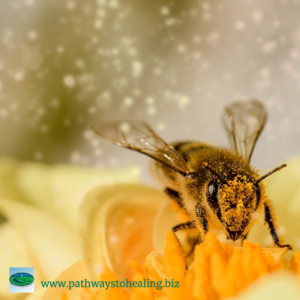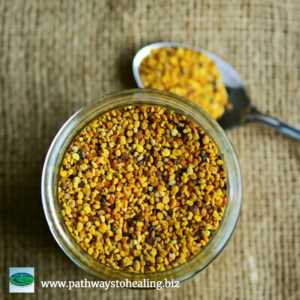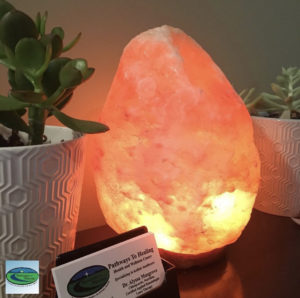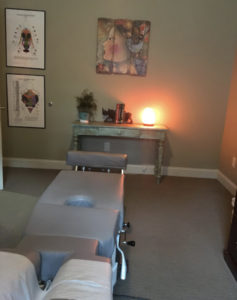By Dr. Alyssa Musgrove – Pathways to Healing
 Springtime in Georgia is beautiful, from the birds singing to the spectacular flowers and blooming trees, everything is coming alive once again. But with this awakening of nature, many people also experience the “awakening” of seasonal allergies. The dense clouds of pine pollen hanging in the air, combined with a myriad of other unseen pollens, make many allergy sufferers want to hide inside until the season passes. So, what are allergies and is there anything we can do to prevent them and enjoy this time of year without suffering?
Springtime in Georgia is beautiful, from the birds singing to the spectacular flowers and blooming trees, everything is coming alive once again. But with this awakening of nature, many people also experience the “awakening” of seasonal allergies. The dense clouds of pine pollen hanging in the air, combined with a myriad of other unseen pollens, make many allergy sufferers want to hide inside until the season passes. So, what are allergies and is there anything we can do to prevent them and enjoy this time of year without suffering?
An allergy is an abnormally high sensitivity to a substance that is not typically harmful. An allergy is essentially an indication that something is out of balance in your body causing it to overreact with an immune response, such as itchy or watery eyes, runny nose, sneezing, eczema, abdominal pain or bloating. Some common causes of allergies are pollens, certain foods, stress, dust mites, pet dander and air pollution.
In recent years there has been a significant increase in allergies and asthma, especially in children. The amount of people suffering with allergies in North America has gone from 10 percent in 1980 to 30 percent today. According to the Allergy and Asthma Foundation of America, 1 in 5 people now suffer from allergies. The American Academy of Allergy, Asthma and Immunology estimates the annual cost of allergies to the health care system and businesses in the U.S. to be $7.9 BILLION.
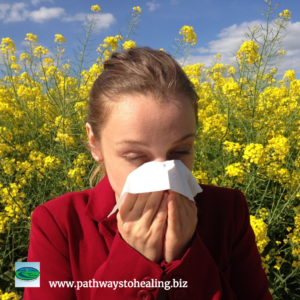 Why are we experiencing this dramatic increase in allergies? The simple answer is that most allergy sufferers’ immune systems are not as strong or efficient as they once were. Over 70 percent of your immune system is in your intestinal tract, and it is common to find an imbalance in the bacteria of the gut resulting from the use of medications, especially antibiotics. A 2010 study from the University of Marcos found that children given antibiotics during their first year of life were at a 66 percent increased risk for developing allergies.
Why are we experiencing this dramatic increase in allergies? The simple answer is that most allergy sufferers’ immune systems are not as strong or efficient as they once were. Over 70 percent of your immune system is in your intestinal tract, and it is common to find an imbalance in the bacteria of the gut resulting from the use of medications, especially antibiotics. A 2010 study from the University of Marcos found that children given antibiotics during their first year of life were at a 66 percent increased risk for developing allergies.
Another cause of increased allergies is inflammation, especially in the gut. Many of the foods commonly consumed by Americans are filled with chemicals and trans fats. In addition, the antibiotics and hormones found in many of the meats we consume also cause the body to become inflamed. Chronic inflammation can cause the body to become over-reactive and hypersensitive, while also causing a decrease in healthy gut flora.
The good news is that there are things you can do to help reduce allergies naturally. As we head in to spring, consider taking some of these simple steps:
- Use a neti pot. A neti pot cleanses and refreshes the nasal passages, thereby improving allergy symptoms. The pot is filled with purified water and a salt-based mixture. (Using water alone in the nasal passages can irritate the inside of your nostrils.)
- Strengthen your immune system by eating good quality food, lots of vegetables, some fruit and some lean meats.
- Eat garlic. Garlic is a natural antibiotic and helps to fight off viruses, infections and allergies. Using real cloves of garlic in your foods is more effective than taking it in supplement form and can offer a powerful boost to the immune system.
- Increase Vitamin D. The optimal range for Vitamin D levels in our blood is between 50 and 100 ng/ml. Vitamin D is a modulator for the immune system and decreased levels of Vitamin D have been linked to autoimmune conditions.
- When possible, reach for natural antihistamines and decongestants. There are several whole food supplements available that can help eliminate histamines, support liver function and loosen mucus without the side effects of most allergy medications. Supplements that we use in our office with great success include Allerplex and Antronex.
 Reach for lemons and limes. Both fruits have high levels of Vitamin C, which boosts the immune system and helps reduce allergies. Drinking lemon/lime water also helps your body get rid of toxins.
Reach for lemons and limes. Both fruits have high levels of Vitamin C, which boosts the immune system and helps reduce allergies. Drinking lemon/lime water also helps your body get rid of toxins.- Drink turmeric ginger tea. Together, turmeric and ginger have powerful anti-inflammatory properties and act as a natural painkiller to help alleviate allergy symptoms. Avoid chamomile tea if you are allergic to ragweed.
- Drink at least 8 to 10 glasses of water a day to stay adequately hydrated. Dehydration makes allergy symptoms even worse.
- Change your air conditioner filters frequently during the pollen season.
- When in your car, keep the ventilation system on re-circulate.
- Experiment with essential oils. Peppermint oil can often unclog sinuses, discharge phlegm and offer relief to scratchy throats. Basil oil reduces the inflammatory response to allergens and helps detoxify the body of bacteria and viruses. Eucalyptus oil can open up the lungs and sinuses, thereby improving circulation and reducing allergy symptoms. Lemon oil supports the lymphatic system drainage and helps overcome respiratory conditions by boosting the immune system. Tea tree oil can destroy airborne pathogens that cause allergies. It also is an antiseptic agent with anti-inflammatory properties.
It is possible to reduce allergies naturally by taking a few simple steps toward strengthening the immune system and limiting overall exposure to environmental allergens. Taking these steps can allow allergy sufferers to move beyond merely “surviving” this time of year, and bring them to a point where they can thrive and enjoy all spring has to offer.
 Pathways to Healing specializes in holistic chiropractic care. Dr. Alyssa Musgrove draws on a variety of techniques, including chiropractic, kinesiology, nutrition, food allergy testing and lifestyle counseling to assist clients in achieving optimal health and wellness in one setting. Pathways to Healing is located at 1022 Founders Row, Lake Oconee Village, Greensboro. The office can be reached at 706-454-2040.
Pathways to Healing specializes in holistic chiropractic care. Dr. Alyssa Musgrove draws on a variety of techniques, including chiropractic, kinesiology, nutrition, food allergy testing and lifestyle counseling to assist clients in achieving optimal health and wellness in one setting. Pathways to Healing is located at 1022 Founders Row, Lake Oconee Village, Greensboro. The office can be reached at 706-454-2040.
